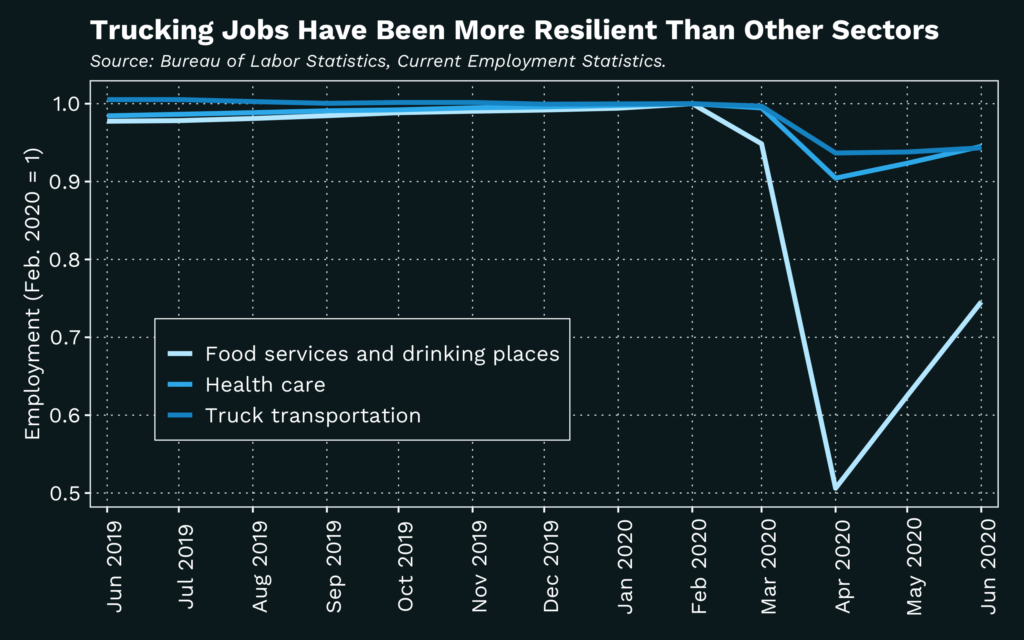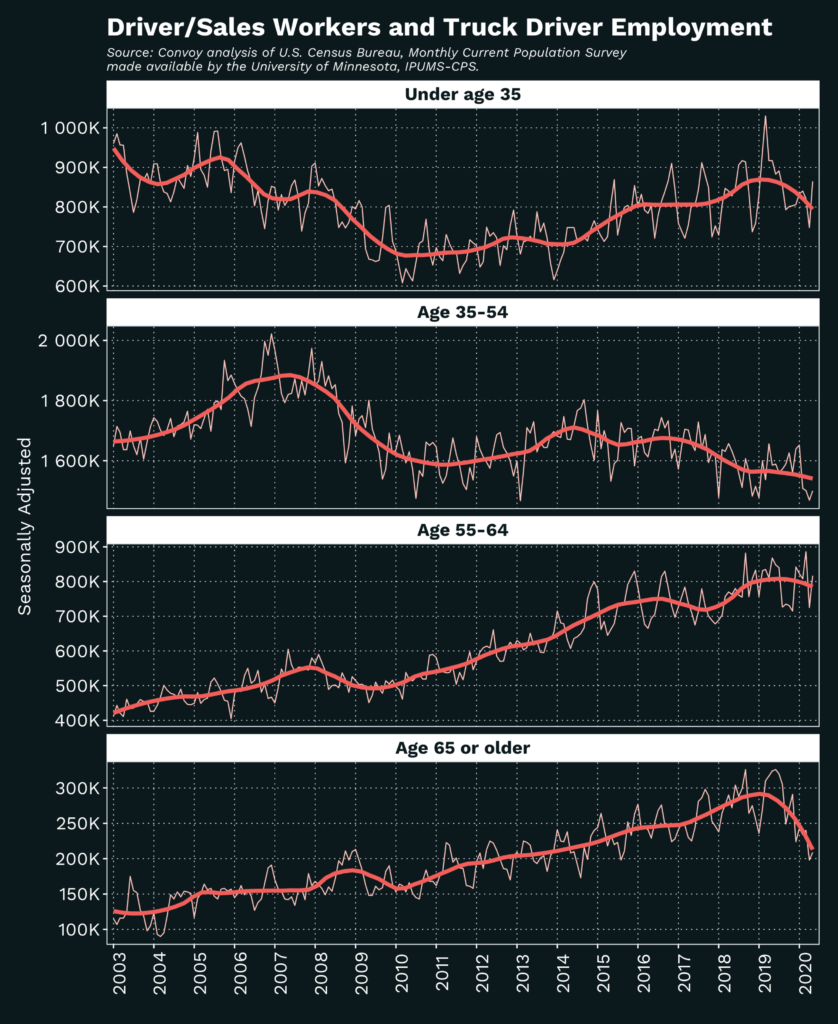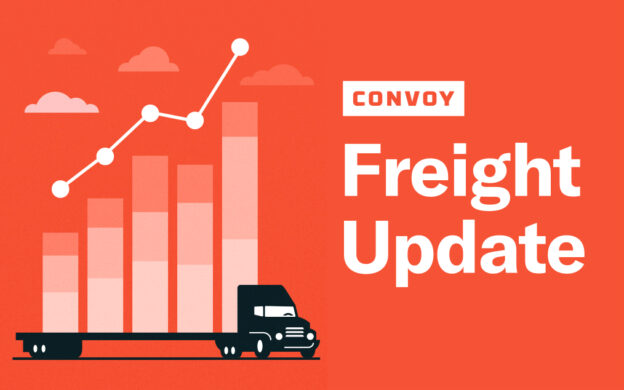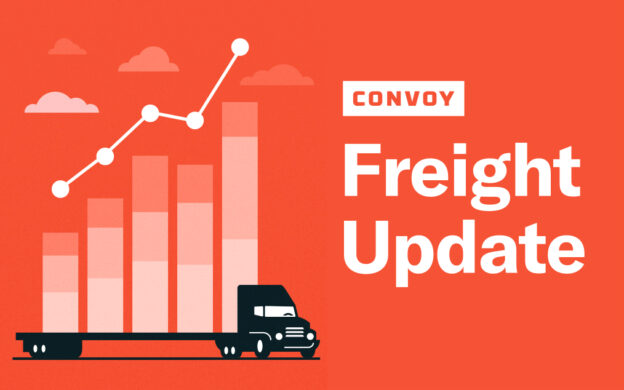COVID-19 Accelerated Trucking’s Demographic Shift
Freight Research • Published on July 2, 2020
Trucking industry jobs have proven more resilient than other sectors of the economy as the COVID-19 pandemic has reshaped the American economy — a trend confirmed by new employment data published by the Bureau of Labor Statistics (BLS) this morning — but beneath the headline numbers, the past few months have accelerated a generational demographic shift in the trucking workforce.
BLS reported that June trucking industry employment increased by 0.6 percent (8,000 jobs) from May. It remains 6 percent below where it stood in February which means nearly 90,000 fewer jobs, before the COVID-19 pandemic. According to Convoy estimates, trucking occupation employment — the number of truck drivers as opposed to the number of trucking industry workers — fell by 7% (about 30,000 jobs), equally split between owner-operator drivers and company drivers.
Trucking industry employment has declined, but it has also been more stable than employment in other industries. During the worst of the pandemic — from February to April — trucking industry jobs fell by 8%, compared to a 10% decline among healthcare jobs and a 50% decline among food service jobs. The sectors that declined the most have, in large part, bounced back the most. Businesses across the country are struggling to figure out where the new normal is for the economy, and what kind of staffing they need to service this new world. In some ways, trucking found that new balance sooner than other sectors.

The headline employment numbers don’t capture the full story of what is happening in trucking: The pandemic is accelerating a long-term demographic and generational shift in the trucking workforce. Older drivers on the cusp of retirement are hastening their exit, and younger, more racially diverse drivers account for a growing portion of the workforce that remains.
For a decade, industry watchers warned that the industry’s older workers were edging toward retirement and that younger, largely Hispanic, workers would ultimately fill their place. But that eventuality kept being punted into the future. Demographic trends are slow-moving — until they’re not.
The number of truck drivers over the age of 65 — who account for about 1 in 13 truck drivers in recent years — is down by one-third (100,000 drivers) in 2020, jobs shed almost exclusively from the ranks of private fleets. This decline is unprecedented and comes on the heels of two decades of nearly uninterrupted increases in the number of older drivers. (It’s a well-documented economic phenomenon that older workers are more likely to exit the labor force during crises.)
Meanwhile, the number of Hispanic workers in the trucking industry has increased by about 50,000 since the start of the pandemic, crossing the 500,000 mark for the first time ever. Hispanic workers are now 25% of all truck industry workers, up from around 20% a year ago, and 15% percent a decade ago.
Sooner or later the economy will return to full speed, but the generational and demographic shifts sparked by the pandemic will be an enduring legacy.

View our economic commentary disclaimer here.


